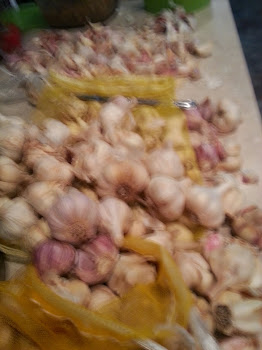Divide and Plant spring blooming bulbs, garlic, onions

Cool fall temperatures and rain have created an ideal time to divide cold-hardy bulbs, plant garlic, and take care of a few other enjoyable tasks outside. our Bluebells April 2014 For most gardeners, the word bulb includes bulbs, corms, tubers and rhizomes. Spring flowers such as iris, lily, crocus, amaryllis, scilla (bluebells, etc.), daffodils and narcissus, all benefit from being dug up, divided, and replanted every 3 to 5 years. You may have noticed that established clumps of bulbs have green shoots in the spring but flower only around the outer edge of the planting or produce no flowers at all. Rather than letting them die out from lack of attention, grab a shovel and dig the clumps by inserting a shovel around the circumference of the planting. Then, carefully insert the shovel beneath the clump and lift the bulbs out. Daffodil clumps can be two or three layers deep; iris rhizomes and roots are shallow. Place the entire clump of bulbs or corms onto a fla


